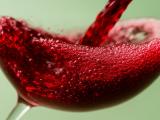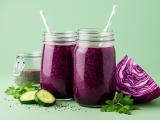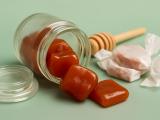The body is not just a vessel to fill up, but an incredibly sensitive system where fluid balance is connected to sleep, diet, environment, and even our habits. Dehydration occurs when the body loses more fluid than it takes in, but it doesn't necessarily have to do with how much water you drink throughout the day.
According to the World Health Organization (WHO), even mild dehydration is associated with headaches, decreased concentration, and fatigue. In the USA, in 2021, it was found that as much as 75% of adults do not drink enough fluids, while reports in Europe show that 1 in 3 people frequently show mild signs of dehydration.
The most sneaky aspect of dehydration is that it is often overlooked, as we think we are drinking enough. In reality, other factors also influence fluid levels. Let's look at four of these factors, supported by recent research, and add some home remedies on how to help without expensive products.
1. Too little or too much sleep can dehydrate the body
You might be surprised, but sleep is not just rest for the brain. During sleep, the body releases various hormones that regulate how long fluid stays in the body. One of these is vasopressin (a hormone that tells the kidneys to retain water). If you don't get enough sleep, this hormone is not released enough, meaning the body loses fluid more rapidly.
A study published in the journal Sleep in 2019 followed 20,000 people in China and the USA and showed that those who sleep 6 hours or less have a 16% higher risk of dehydration compared to those who sleep at least 8 hours. However, too much sleep is also not a solution. If you sleep 10 hours or more, the body simply loses moisture through the skin and breathing without replacing it through drinking.
Folk practices are very interesting here. For example, in the Balkans, there was an old habit of always placing a glass of water or tea next to the bed, so it was at hand immediately upon awakening. Today we would say that it is a simple but effective trick. Drinking a glass of water in the morning really resets the body and helps restore fluid levels more quickly.
2. Dry air in airplanes – the silent thief of moisture
If you have ever flown and felt drained after landing, as if you had run a marathon, then you have already experienced this phenomenon. Due to technical reasons, airplane cabins have very low humidity levels, often only 10 - 20%, while normal room humidity is around 40 - 60%.
A study published in the journal Nutrients in 2020 showed that hydration significantly decreases in passengers after just 4 hours of flying, resulting in dry skin, a dry throat, and increased fatigue. If we add stress, time zone changes, and sometimes alcohol on the plane, it's a recipe for perfect dehydration.
Interestingly, some old travelers on long journeys used to carry apples with them. Why? Because an apple is not just a fruit, it contains about 85% water and also provides fibers and vitamins that help the body maintain balance. Instead of expensive hydration drinks offered at airports today, the same effect could be achieved with simple fruits.
A practical tip for modern travelers is to drink at least half a liter more water than usual the day before the flight and to avoid alcohol and carbonated drinks on the plane. A glass of warm tea may be a better choice than a bottle of sweet drink.
3. Sugar – the hidden culprit that pulls water from the body
Many people think that by drinking carbonated beverages, they stay hydrated. However, the sugar in these drinks acts in the opposite way. When we consume a lot of sugar, the body tries to balance blood sugar concentration by drawing water from the cells, increasing the sensation of thirst and causing more frequent urination.
A study from 2016 (American Journal of Physiology) showed that rehydration with sweet carbonated drinks in animals actually worsened dehydration and burdened the kidneys. Translating this to humans, the firefighter we use for thirst (cola or energy drink) actually fuels the fire.
To illustrate: a can of soda contains an average of 35 g of sugar. That's about 7 teaspoons. The World Health Organization recommends that adults do not exceed 25 g of added sugar per day. So, just one can already exceeds the healthy limit and also takes away fluids from the body.
An old piece of folk wisdom says: if you're thirsty, drink water, but if you want flavor, eat fruit. Fruits contain natural sugars, but also a lot of water; watermelon contains as much as 92% water, oranges around 86%, and even pears more than 80%.
4. Alcohol, an old acquaintance that steals water from the body
Alcohol is a diuretic, meaning it accelerates urine excretion. This means that the body loses more fluid than it takes in. The main reason is, again, the hormone vasopressin, which alcohol suppresses. When there is not enough of it, the kidneys do not retain water but expel it more quickly.
Dietitian Jenna Braddock warns that just two to three glasses of wine can cause significant dehydration, especially if consumed on an empty stomach. Hence, it often happens that the next morning we have a headache and dry mouth – a combination of dehydration and liver strain.
The statistics are clear: according to the National Institute on Alcohol Abuse, in 2023, 65% of adults in the USA drank more alcohol than recommended at least once a month, leading to frequent exposure to dehydration.
A good tip, known from old folk rules, is to drink one glass of water for every glass of wine. By following this, you can significantly reduce the risk of waking up dehydrated in the morning. It also helps if you always combine alcohol with food, especially with meals that have high water content, such as salads or soups.
How to recognize dehydration and what to do at home
Signs of dehydration are not always obvious. Mild dehydration can manifest as a headache, concentration difficulties, or even bad mood. In children, it is shown as drowsiness and reduced desire to play, while in older people, it often appears as confusion. Just a 2% loss of body weight in water can reduce physical performance by 20%, as studies have shown among athletes.
If you want to help your body quickly, you don't have to buy expensive electrolyte drinks. Homemade solutions are simple:
- a glass of water with a little salt (salt helps retain water),
- homemade soup, which provides both fluid and minerals,
- fruits with high water content, such as watermelon, cucumbers, or strawberries.
In India, a simple drink called nimbu pani is still used today, made from water with lemon, a pinch of salt, and a little sugar. This is a homemade electrolyte drink that costs a few cents but works wonders.
Water is just part of the story
Dehydration is not only due to insufficient water intake. As we have seen, it can be influenced by sleep, travel, dietary habits, and alcohol. Although advertising campaigns often persuade us that we need expensive hydration formulas, the truth is that we already have everything we need at home. A glass of water, some fruit, and proper sleep are still the best and cheapest solution.
Most importantly, listen to your body. If you feel tired, have a dry mouth, or a headache, the hidden thief of moisture may be to blame. And at that moment, it's best to reach for the oldest remedy in the world: pure water.
Datum: 20. SEP 25 - GOOD TO KNOW
4 sneaky reasons for dehydration that have nothing to do with water
When we tell people to drink enough water, they usually smile and think it's the easiest health advice in the world. But is it really that simple? The truth is much more complex.
(FW)
 Would you like to be informed about news on the website?
Would you like to be informed about news on the website?
Just enter your e-mail
Dehydration causes
Sleep and dehydration
Airplane dehydration
Sugar and dehydration
Alcohol dehydration
|
Copyright (c) Foodwhisper.com March 2018 |
π | Contact: info@foodwhisper.com |
About us | Facebook |  |









